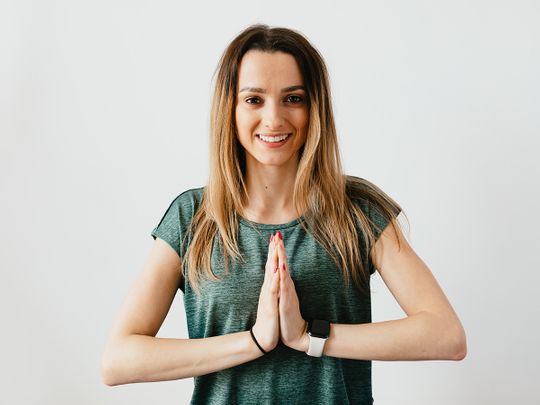
During the peak of the COVID-19 pandemic, people had to change the way they greeted each other – no more handshakes, hugs, or kisses on the cheek. But for some cultures, this was nothing unusual; contactless greetings have been a longstanding tradition in their countries.
Click start to play today’s Spell It, where we show you ‘local’ greetings that spread around the world in the pandemic.
Here are five ways people greet each other without touching:
1. Namaste
From India to Nepal, the greeting ‘namaste’, accompanied by a gesture of pressed-together palms that point upwards, has been in use for several thousands of years. The greeting is even mentioned in the Rig Veda, the oldest of the four Vedas (sacred Hindu texts). The gesture is considered to be a sign of respect and gratitude.
2. Wai
A standard practice across Thailand, and quite similar to the namaste, the wai involves a slight bow of the head, with one’s hands pressed together in front. The gesture has a number of applications; it can be used to greet people, it can be a part of dance performances, or can even be used as an apology. As a greeting, Thai people usually add the phrase ‘sawatdee kha’ or ‘sawatdee krab’, depending on gender, and it becomes a polite way of saying hello.
3. Bowing
Bowing was introduced to Japan from China, in the seventh century. The practice was once a gesture of deference, used by nobility, but has since become one of the most recognised greetings in Japan. Bending the body and lowering the head is thought to convey reverence to others, and indicates that the person has no intention of malice toward the other person. The degree to which you bend also communicates a message. According to a report in the National Geographic, the torso is usually bent from the hips by 15 degrees. But to honour a superior or to greet a client, you would bend by 30 degrees. And to show deep sorrow or to apologise, you would bend a full 45 degrees.
4. Cup and clap
In Zambia, a common nonverbal way of saying hello is by cupping your hands together and then clapping a few times while saying ‘mulibwanji’ (meaning ‘hello’). If you’re greeting your in-laws, you would add another step – cup your hands, squat down low and then clap in this position. Lowering of the body conveys respect and deference. Similarly, with other elders, many Zambians place a hand on their chest and stomach, bend their legs slightly (like in a curtsy) and say hello.
What kind of nonverbal gesture do you use when you’d prefer not to make contact with others? Play today’s Spell It and tell us at games@gulfnews.com.








